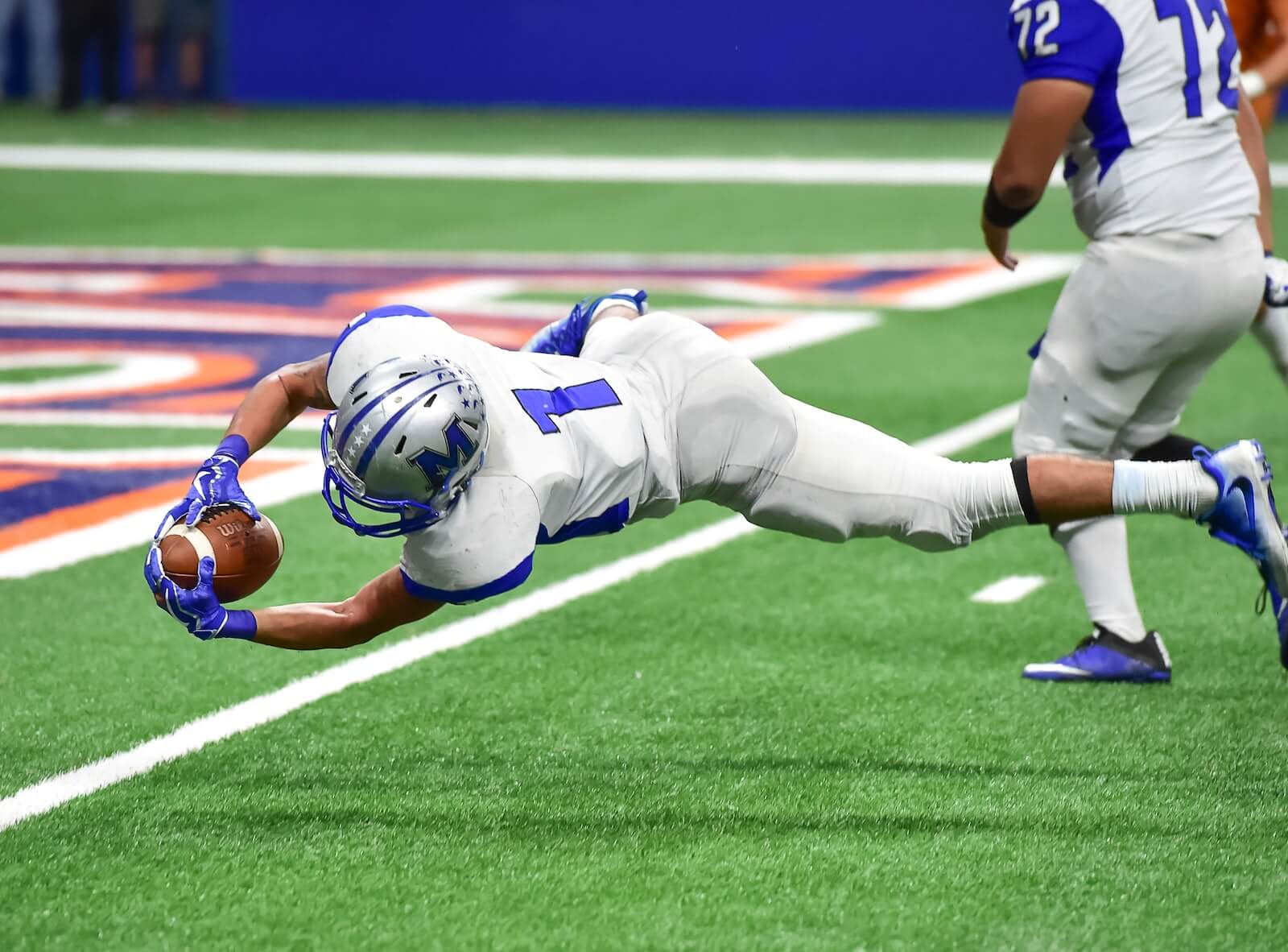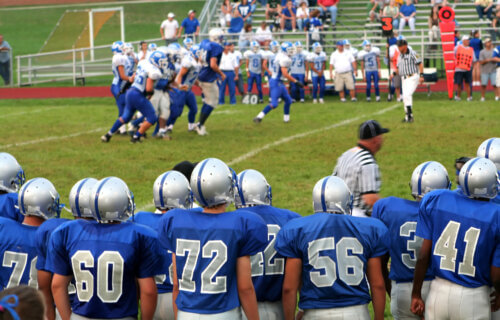LOS ANGELES — Are big, masculine athletes more self-conscious about their body image than we think? A new study finds some football players (especially wide receivers) wear lower jersey numbers to appear thinner and quicker.
The study validated this long-standing belief about how athletes choose their iconic uniform numbers. In 2019, an ESPN report explored why many NFL wide receivers opted for jersey numbers between 10 and 19. The investigation discovered that many felt these lower numbers made them appear to run faster than higher numbers typically allocated to their position — starting in the 80s.
Although Professor Ladan Shams from UCLA provided a psychological explanation for this trend back then, she highlighted the lack of scientific research on the matter. However, a subsequent UCLA study led by Prof. Shams and published in the journal PLoS ONE has now proven that the wide receivers were indeed onto something. In two separate experiments, participants consistently felt that players wearing jerseys numbered 10 to 19 appeared slimmer than those wearing 80 to 89, even when the body sizes were identical.
“How we perceive the world is highly influenced by our prior knowledge,” says Shams, the paper’s senior author, in a media release. “In our daily lives, numbers written on objects — on a bag of sugar in the supermarket or weights in the gym — usually represent the magnitude of the objects. The higher the number, the bigger or more massive the object generally is.”

As the senior author of the study, Prof. Shams suggests that past statistical associations between numbers and sizes can influence body size perceptions.
“Previous research has established that our brains are very good at detecting and storing statistical associations and regularities, unbeknownst to us, and those associations can shape future perception.”
She further added that the human brain is adept at discerning and remembering these associations, even subconsciously, and these can impact subsequent perceptions.
Historically, an NFL regulation mandated wide receivers to choose jersey numbers between 80 and 89. This changed in 2004, allowing them to select lower numbers. By 2019, around 80 percent of wide receivers selected numbers between 10 and 19.
Prof. Shams, an expert in perception science, redirected her focus to jersey numbers during the COVID-19 pandemic slowdown. Her team devised an online study, presenting participants with computer-generated images of players in varying body sizes, skin tones, and jersey colors, asking them to evaluate their slimness. Each player was showcased twice, once in high and once in low-numbered jerseys. Regardless of other factors, low-numbered jerseys typically made players seem thinner.
When COVID restrictions were relaxed, the UCLA team ran the experiment in person. To counter arguments regarding the numeral 8 occupying more shirt space than 1, they compared jerseys like 17 with 71 and 18 with 81. Results still favored lower numbers, though to a slightly lesser extent.
Prof. Shams concludes that these results “strongly support” the idea that the brain uses learned associations between numbers and size when determining body size. This resonates with prior research emphasizing statistical learning as a core cognitive function.
She emphasizes that these associations aid the brain in deciphering sensory data, which is crucial for survival. Although the perception of a football player’s size might not impact their performance, such biases can have negative repercussions in broader societal contexts, like when they shape judgments and behaviors, a phenomenon often termed as implicit bias.
“Our work highlights the importance of representation,” Shams concludes. “We need to see all kinds of people doing the full diversity of things people can do. We can use the statistical learning power of our brains to reduce implicit bias.”
You might also be interested in:
- Best NFL Wide Receivers Of All Time: Top 5 Pass-Catching Legends, According to Fans
- Best Football Gloves: Top 5 Pairs For Receivers, According To Sports Experts
- Best Fantasy Football Platforms: Top 5 Sites, According To Experts
South West News Service writer Stephen Beech contributed to this report.


“… numbered 10 to 19 appeared slimmer than those wearing 80 to 89 …”
No Shit Sherlock, number 11 looks slimmer than 88, who could possibly have guessed that?